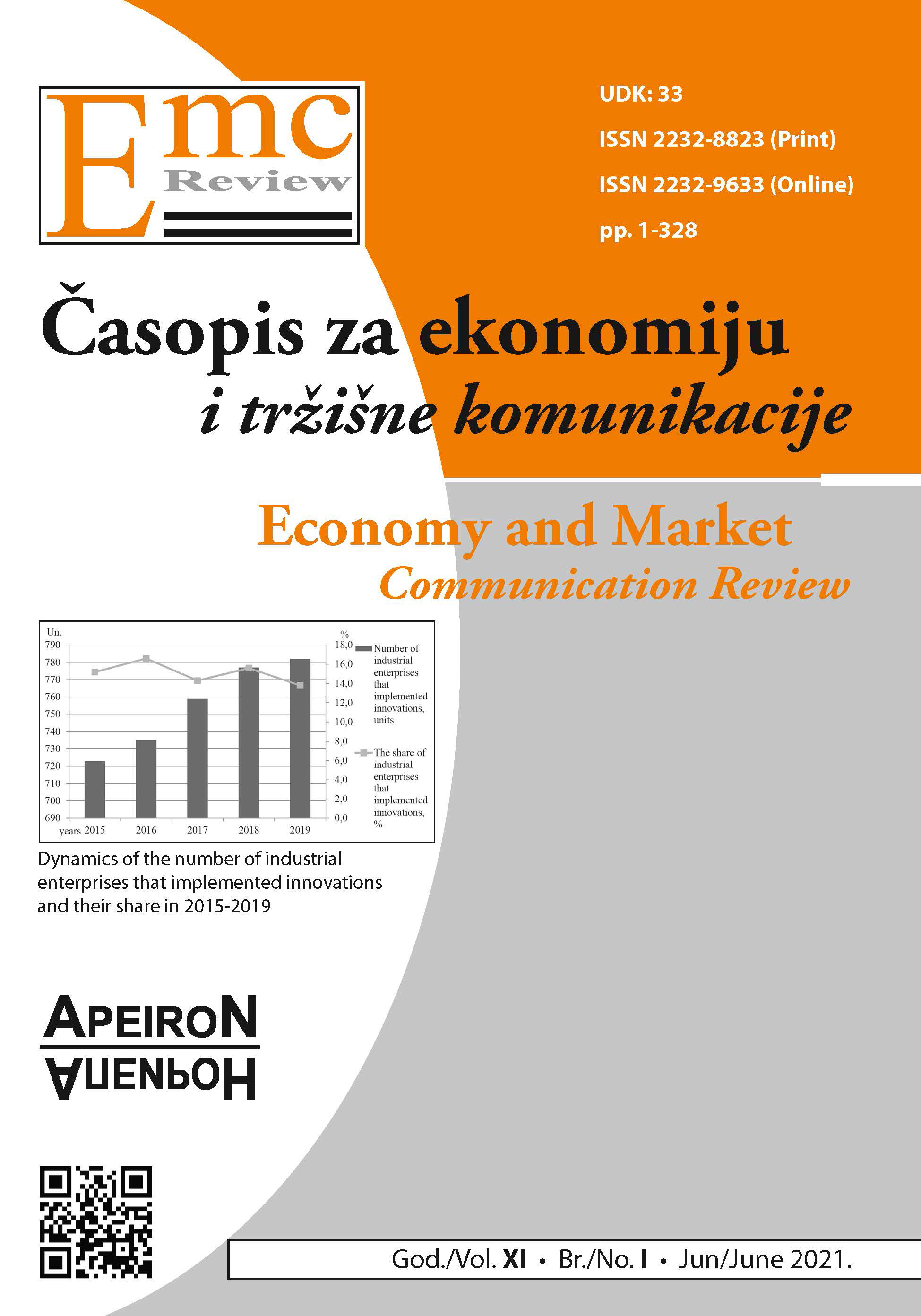THE INFLUENCE OF THE FINANCIAL STRUCTURE OF CAPITAL ON THE ESTIMATED VALUE OF THE COMPANY
DOI:
https://doi.org/10.7251/EMC2101240MAbstract
In the modern business environment, the appearance of mergers and acquisitions, the sale of companies, as well as the disappearance of companies from the market are an everyday occurrence. In these, so called “transactions”, there is a need to determine the value of a company that is merged with another company, or that is being sold, or on the other hand that disappears from the market, i.e. goes into liquidation. The companies that are the subject of these “transactions” differ in a number of criteria. One of these criteria is the capital structure. The capital structure is conditioned by numerous factors, from profitability, creditor security, all the way to financial elasticity. Each of these factors implies a different ratio of equity and borrowed capital. The aim of the research is to determine the influence of the financial structure of capital on the estimated value of the company. The methods used to estimate the value of the company are: the method of discounting net cash flow, as a method of yield approach and the method of multiplier based on comparable transactions, as a method of market approach. The influence of the capital structure on the estimated value of the company was determined on the basis of regression and correlation analysis. The results obtained by applying the multiplier method based on comparable transactions, indicate that, with the increase of the share of borrowed capital in the capital structure, the estimated value of the company increases, which is in line with Modigliani - Miller theorem from 1964.
However, as the costs of financial troubles increase with the increase in indebtedness, i.e. creditors lose trust in a given company, the question arises what is the upper limit of the company’s indebtedness that maximizes the estimated value of the company. To answer this question, the method of discounting net cash flows was applied. Applying the method of discounting net cash flows, it was determined that the relationship between the share of debt in capital and the value of the company is in line with the theory of static compromise. This means that with an increase in the share of debt in capital, the value of the company will grow to a certain level of that leverage, and after that level, the value of the company will decrease with an increase in the share of debt in capital. The level of debt participation in the capital that maximizes the value of the company differs from company to company, i.e. it is not unambiguously determined and it depends on the price of equity and borrowed capital, as well as the level of income tax rate. Taking into account the above-mentioned results, as well as the results of hypothesis testing, it can be concluded that the hypothesis was confirmed, according to which with increasing share of borrowed capital, the value of the company will grow to a certain level of leverage, and after that level with further increase of leverage the value of the company decreases.
